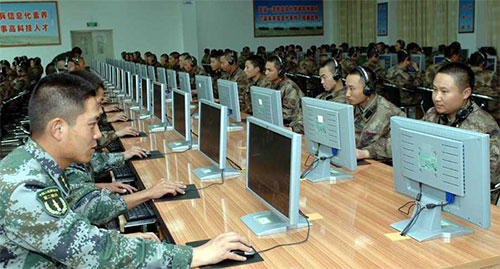
Who is Hacking into US Critical Infrastructures
- By Ginger Hill
- Feb 22, 2013
 According to the New York Times, Mandiant, a U.S.-based cybersecurity firm, revealed that it was likely that China’s military personnel hacked into Telvent Canada, a firm known as Schneider Electric that makes switches and other gear for oil and gas pipelines. The Chinese military denies the allegations, stating they are “groundless both in facts and legal basis.”
According to the New York Times, Mandiant, a U.S.-based cybersecurity firm, revealed that it was likely that China’s military personnel hacked into Telvent Canada, a firm known as Schneider Electric that makes switches and other gear for oil and gas pipelines. The Chinese military denies the allegations, stating they are “groundless both in facts and legal basis.”
Should the Chinese be to blame, experts say the snooping probably served two purposes:
- To gather information to improve the Chinese critical infrastructure; and
- To lay the groundwork for a future attack to shut down U.S. systems.
Headquartered in the outskirts of Shanghai is Unit 61398 of the People’s Liberation Army, where alleged cyber-attacks take place. According to American intelligence officials, they have tapped into this activity of the Chinese army for years. If this is true, then a high percentage of attacks on American corporations, organizations and governmental agencies originate here…in a white, 12-story tower of offices.
Officials at the Chinese embassy in Washington insisted that their government does not engage in computer hacking, and that such an activity is illegal. However, Mandiant has detected more than 140 intrusions since 2006.
The Chinese Ministry of Foreign Affairs has also responded to these allegations. Hong Lei, a ministry spokesman, said, “Making unfounded accusations based on preliminary results is both irresponsible and unprofessional, and is not helpful for the resolution of the relevant problem. China resolutely opposes hacking actions and has established relevant laws and regulations and taken strict law enforcement measures to defend against online hacking activities.”
Obama administration officials have noted that they plan to inform China’s new leaders that the volume and sophistication of the attacks have become so intense that they threaten the fundamental relationship between Washington and Beijing.
It seems that America is in a digital war with China. “In the cold war, we were focused every day on the nuclear command centers around Moscow,” one senior defense official stated. “Today, it’s fair to say that we worry as much about the computer servers in Shanghai.”
Most industrial control systems in America are fairly well guarded, but according to Chief Executive of Digital Bond, Dale Peterson, “Once a hacker is in the system, there’s very few safeguards preventing the intruder from sending commands that could, say, cause an accident at a chemical plant or lead a pharmaceutical factory to dispense the wrong medications.” Both, of which, could obviously cause disastrous results.
The power grid is one of the most critical systems because without electricity everything – offices, factories, etc. – stop operating.
Mark McGranaghan, a power delivery and utilization specialist at the Electric Power Research Institute, stated, “It’s an issue at the top of the list of every utility executive.”
It’s difficult to accurately play the “blame game” when it comes to computer hacking, due to the sophisticated tactics of professional hackers. While people may be able to pinpoint and target the exact area in which the hacking originated, proving exactly who participated in the act of hacking itself is a bit more difficult.
Sources: http://www.nytimes.com/2013/02/19/technology/chinas-army-is-seen-as-tied-to-hacking-against-us.html?pagewanted=all
http://money.cnn.com/2013/02/20/news/economy/hacking-infrastructure/index.html
Photo courtesey of KG News - http://kevingilmour.net
About the Author
Ginger Hill is Group Social Media Manager.